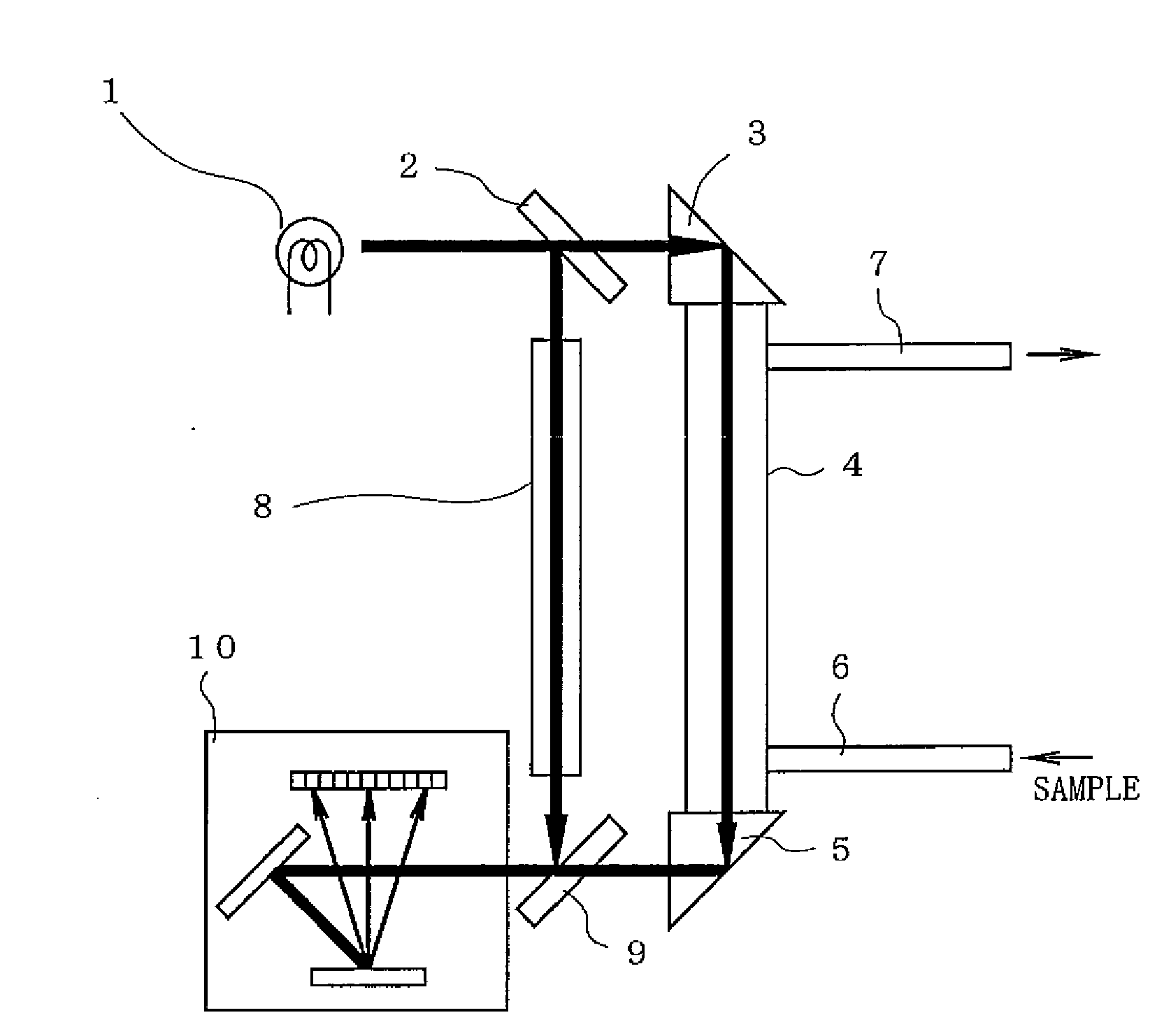Oil type discrimination method and oil type discriminator
- Summary
- Abstract
- Description
- Claims
- Application Information
AI Technical Summary
Benefits of technology
Problems solved by technology
Method used
Image
Examples
first embodiment
[0060]FIG. 1 is a flowchart showing an oil type discrimination method according to the present invention. In this method, the absorbance spectrum of a sample is found by the already known absorptiometric method using near infrared light and then the type of oil (regular gasoline, high-octane gasoline, kerosene, and diesel oil) of a sample is discriminated based on the absorbance spectrum.
[0061]The configuration of a detection cell is outlined with reference to FIG. 2. In FIG. 2, reference numeral 1 denotes a light source, such as a tungsten lamp, 2 and 9 denote a half mirror, 8 denotes a reference unit, 3 and 5 denote a prism mirror, 4 denotes a flow cell, 6 denotes a sample introduction tube, 7 denotes a sample discharge tube, and 10 denotes a spectrophotometer capable of detecting wavelengths (about 800 nm to 1,100 nm) in a near infrared region, which measures the transmitted light spectrum of a sample by introducing measurement light that has transmitted the sample (oil to be dis...
second embodiment
[0100]An oil type discrimination method according to the present invention is explained next.
[0101]As described above, there is a possibility that two types of oils are mixed before and after switching between types of oils to be transported in a pipeline or at an oil tank station. Depending on the types of oils to be mixed, there is a case that their absorbance cannot be discriminated clearly from the absorbance of a single type of oil.
[0102]FIG. 6 shows the absorbance spectrum of a mixed oil of regular gasoline 20% and diesel oil 80% and that of kerosene, a single type of oil, the shapes of which closely resembling each other. Therefore, if discrimination is performed based on only the shapes of the absorbance spectra as in the first embodiment, there is a possibility that the type of oil is discriminated erroneously.
[0103]Accordingly in the second embodiment, as a preliminary process of the first discrimination process (first discrimination step S3) in the first embodiment, a pro...
PUM
 Login to View More
Login to View More Abstract
Description
Claims
Application Information
 Login to View More
Login to View More - R&D
- Intellectual Property
- Life Sciences
- Materials
- Tech Scout
- Unparalleled Data Quality
- Higher Quality Content
- 60% Fewer Hallucinations
Browse by: Latest US Patents, China's latest patents, Technical Efficacy Thesaurus, Application Domain, Technology Topic, Popular Technical Reports.
© 2025 PatSnap. All rights reserved.Legal|Privacy policy|Modern Slavery Act Transparency Statement|Sitemap|About US| Contact US: help@patsnap.com



